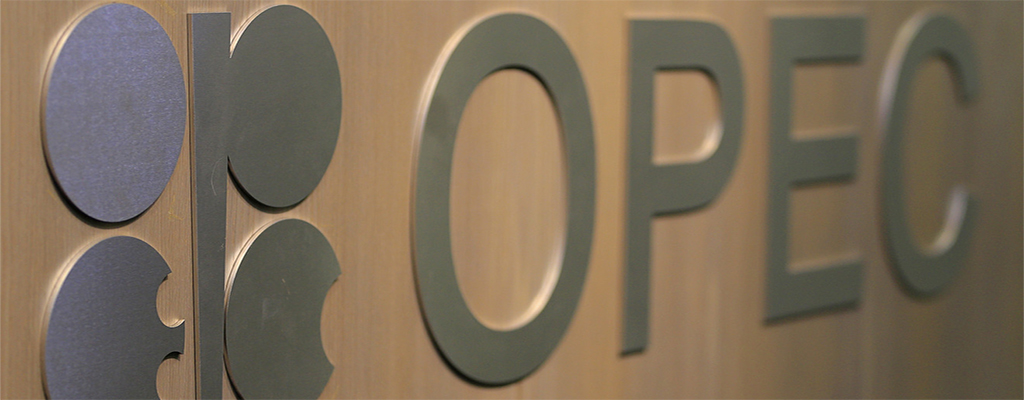This week, the OPEC+ group is meeting to discuss when and how to begin easing the ongoing production cuts. The alliance looks to have dug itself deeper into a position between a rock and a hard place, again.
Although they are not publicly admitting it, OPEC and its allies want to keep oil prices fairly high, as many of these need oil to trade at least above $80 per barrel to avoid budget deficits, and even above $90 a barrel for most, including Saudi Arabia.
OPEC’s Dilemma
However, higher oil prices are also helping non-OPEC+ supply growth, not only from the United States but also from producers such as Guyana and Brazil.
For the umpteenth time, OPEC is caught between its own revenue needs and the loss of market share to rival non-OPEC+ supply.
OPEC, of course, has been stating for years that it isn’t going for a specific oil price with the production cuts—rather it’s all about ensuring and keeping “market stability.”
But as prices have stabilized at just over $70 per barrel Brent in recent weeks, OPEC faces another dilemma at the December 5 meeting, which was postponed from the originally planned date December 1.
If the cartel and its allies begin unwinding the cuts in January – as currently planned – they risk a certain slide of Brent Crude prices below $70 a barrel and possibly further down as demand doesn’t appear great and the oversupply next year would only grow.
Lower prices could hurt U.S. drillers, but they would also hurt OPEC and Russia, the ultimate petrostates for which oil revenues are the single biggest budget income.
In this situation, OPEC’s exit strategy from the production cuts is now more unclear than ever. If OPEC+ producers want to bankrupt U.S. drillers as they have attempted – and achieved – in the past, they would have to bust their own budgets and endure a prolonged period of price pain until demand begins outstripping supply again.
Yet, the leader of the cartel and the OPEC+ group, Saudi Arabia, needs oil income pouring in, a lot of it, to fund the Crown Prince’s Vision 2030 program of tech and construction and tourism wonders that would reduce the Kingdom’s reliance on oil.
The group has limited options in easing the production cuts as these restrictions, aimed at supporting oil prices, helped non-OPEC+ supply, especially from the United States, Iran’s Governor for OPEC, Afshin Javan, wrote in a column of Iranian state news agency Shana last week.
The post was taken down hours after it was published, but it managed to catch the attention of analysts. It is as a rare admission from an OPEC member that the cartel’s policies to boost oil prices are boosting U.S. oil production growth, too, Bloomberg Opinion columnist Javier Blas argues.
In the post, which briefly appeared online, Iran’s Javan wrote that “This strategy in support of prices has effectively encouraged higher supply outside the group, particularly on the part of the US.”
And acknowledged, “That would leave a limited room for maneuvering by OPEC+ to ease its restrictions.”
Javan also cited “bleak economic prospects” in China as throwing in another challenge at OPEC’s plans to ease the production cuts.
OPEC+ had earlier this year announced plans to start gradually bringing back supply towards the end of the year, market conditions permitting. Since the price has lingered below $80 per barrel for months, the group has been postponing its supply return. Some have suggested the production caps may have to become long-term because of the market’s refusal or failure to respond to the supply curbs with higher prices.
Weak fundamentals could prompt the OPEC+ group to delay – once again – the output increase currently planned to begin in January, according to recent market speculation.
Saudi Arabia is pushing for a delay of between three and six months, OPEC+ delegates have told Bloomberg’s Blas. The Saudis have even sought support for extra cuts, but none of the other producers in the alliance has expressed willingness to support additional cuts, according to the delegates.
The Trump Wildcard
The OPEC+ group is likely to delay the unwinding of the production restrictions, not least to see what U.S. President Donald Trump will do with Iran and Venezuela when he returns to the White House in January.
Analysts widely expect Trump to tighten the screws on Iran and attempt stricter enforcement of the U.S. sanctions.
If a fairly large chunk of Iran’s supply – which goes mostly to China – is taken off the market, OPEC+ will have a reasonable justification for starting to ease the production cuts.
However, if President Trump follows through with his tariff threats, global trade and economies could suffer and reduce the expected oil demand growth, analysts say.
OPEC+’s best play for this week’s meeting may be to postpone the cuts until the end of March 2025, to see how the first policies of the new Trump administration would affect the oil market and the economy.
By Tsvetana Paraskova for Oilprice.com
Related Stories

